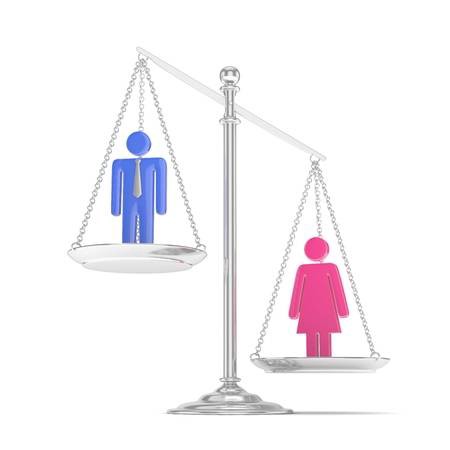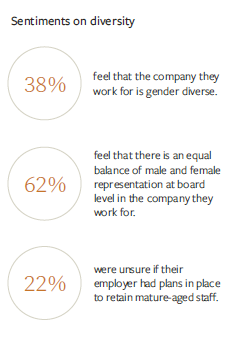Gender equality in STEM fields has been an inescapable issue for what seems like an age. Women were instrumental in the foundation of computer science, yet their presence in the tech field has been lacking in recent decades.
Thanks to countless people working to foster greater diversity in tech and level the playing field for women in the sector, things are changing. Typically male-dominated lines of work are gradually seeing more female professionals joining the ranks, but there’s clearly still work to be done; women make up just 17% of the UK’s current tech workforce. Grimmer still is the rate at which tech’s culture and rates of pay are catching up with the sector’s changing demographic landscape.

So with the push for not only diversity, but equity, making waves in the tech space in 2018, to what extent is this change affecting women working in tech today? Are those on the ground beginning to feel the benefits of changing attitudes, or is the push for parity yet to produce practical, tangible results for working tech professionals?
An annual survey of the Microsoft business application field, the Microsoft Dynamics Salary Survey recently found that women in the channel believe men enjoy greater rewards despite being of equal skill and experience.
When asked if they believed their salary was equal to that of a colleague of the opposite gender, doing the same role, with the same level of experience, 36% of female respondents said no. That means more than a third of women surveyed believed that male employees were being paid more for doing the same job, despite having comparable skills and experience. Just 7% of male respondents agreed that this is the case. Only 33% of female respondents believed that their employer paid men and women equally for the same work, compared to 57% of male respondents.
These perceptions of inequality that female professionals in the Microsoft business tech sphere are reporting are backed up by the survey’s self-reported salary data. In the UK, the average salary for a female Dynamics professional appears to be around £40,000, while their male counterparts bring in an average of £49,750 — a significantly larger divide than the 9.1% cross-industry UK average.
Scales of inequality

Though the report represents a reasonably niche sector within the tech industry, the figures correlate with surveys conducted on a broader scale within the wider sector. Thanks to a recent government initiative, all companies with more than 250 staff members are now obliged to reveal the average salaries of men and women across their organisation. As the country’s biggest tech firms unveiled their pay data for the first time earlier this year, Wired magazine examined the data of 18 tech companies with a base in the UK. Wired’s analysis uncovered that, across these 18 tech businesses, women earned on average 85p an hour for every pound earned by a man, and bonuses around 35% lower.
Aside from being staunchly unfair and leaving women short-changed for their work, this perception of inequality in the tech space can have wider-reaching consequences, not only for professionals working today, but for the future of the sector at large.
With a looming skills gap continuing to threaten the stability UK’s IT candidate pool, prejudicial pay practices can have devastating effects for employers as competition for tech talent becomes more fierce.
Being paid unjustly naturally gives women a negative view of their employer, sending morale and employee loyalty through the floor and making it harder for companies to keep hold of good staff. Undervaluing female talent not only discourages professionals from joining an organisation, but on a wider scale, dissuades new blood from entering the channel — after all, why would anyone want to do a job where they’re being paid less than others for the same work?

Alienating women from the sector through devaluing them only perpetuates the cycle of underrepresentation, and exacerbates skill shortages. Fewer female tech pros means limited visibility, and for young girls and women entering the tech sphere, if you can’t see it, you’re less likely to believe you can be it.
The rift in the perception of inequality was further illustrated when respondents to the Microsoft Dynamics Salary Survey were asked if they felt that gender disparity was a significant issue in the technology field; 55% of women agreed that it was, compared to 41% of men.
Scales of inequality

With men still holding the majority of decision-maker and board level positions in IT, chances are it’ll take an industry-wide cultural adjustment for women to truly thrive in this masculine-leaning world. Unifying perceptions in the tech space is crucial to making progress; you can’t help make things better if a significant portion of those in the sector don’t acknowledge the issue to begin with.
Changing attitudes is always going to take time, but the figures on tech’s gender pay gap don’t lie, and the sooner employers start paying female professionals in the industry fairly, the sooner we’ll see the disparity between male and female tech workers in areas beyond salary begin to wither.
The tech jobs market remains one of the fastest growing in the country, and demand for skilled tech professionals is only set to increase. It’s clear that companies need to acknowledge inequality in tech for the problem it is — not only on a social scale, but an industrial one — and commit to actively striving for parity, or be faced with an increasingly severe talent shortage in the very near future.
Not only will employers who embrace pay equity be righting a clear wrong, they’ll reap benefits by attracting and retaining the best talent on the market, and outstripping their competition in the face of tech’s growing skills gap.
Zoe Morris
Zoe is the COO of niche IT recruitment firm Frank Recruitment Group, overseeing the company’s ongoing business and sales operations, employee training, and hiring initiatives.